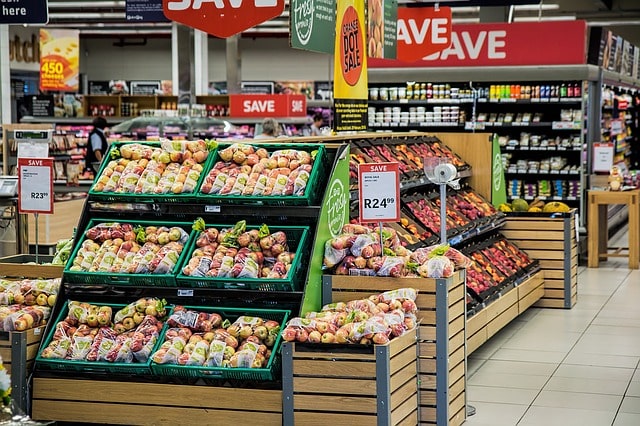By Wreford Momanyi
Consumers have become the most powerful drivers for the evolving retail industry, and also increasingly demanding. The modern-day consumer is different: over the last decade, we have witnessed changes in consumer behaviour, demographics and technology adoption and advancement. Retailers must continuously understand and adapt to these changes to remain competitive.
Globally, most retailers have recorded a decrease in store sales but an increase in online sales over the last few years. According to a press release by UNCTAD on 29 March 2019, Global e-commerce sales grew 13% in 2017, hitting an estimated $29 trillion.
For most businesses, online sales is increasing proportionally and fast becoming the leading sales channel. Ease of payment, increased internet penetration, and smartphone penetration have been the key drivers for online retail sales.
Most consumers have a social media presence and use mobile applications. They are becoming more innovative and aligning their strategies with these consumer trends.
Demographics
Changing consumer behavior patterns are aligned to the millennial generation’s increasing participation in the market. Millennials have been characterized to be socially conscious and heavy consumers of online content who prefer texting or messaging to calling and demand instant responses and reactions.
It is estimated that 75% of the global workforce will be composed of millennials by 2025; most of the people with the greatest purchasing power will soon be millennials. Consequently, the role of millennials in defining the future of retail and e-commerce cannot be underestimated.
Read>>>> The Collapse of Supermarket Chains: Evidence and Lessons for Retail Giants
Retailers cannot only rely on sales at the physical branches, but also embrace omnichannel sales. Modern and future consumers demand constant engagement online in terms of marketing, sales and customer service. Most small-scale retailers have set up online stores without physical shops where consumers can order and goods are delivered to their doorsteps.
According to a Nielsen survey in 2018, at least 25% of Kenyans shop online and use social media to find out about fast moving goods.
Thus, for any retailer to survive the coming years, they ought to have an online presence and embrace omnichannel strategies for seamless customer experience, engagements and retention.
Digital Payments
Cheap, secure and convenient payment channels have been instrumental to the growth of the retail industry and a key enabler in the retail value chain.
Financial institutions and telecommunication companies are key drivers to these advancements. Through their collaboration and integration of financial services, retail businesses can accept payment platforms such as debit cards, credit cards, mobile money and even, in some cases, cryptocurrency.
Consumers prefer the “buy anywhere, pay from anywhere and deliver at my location” model for convenience. Successful retailers ought to continuously simplify their payment stack, not forgetting the potential for cybercrime.
Artificial Intelligence
In today’s retail environment, an online presence alone is not enough. Continuous learning about customers’ needs and behavioural patterns is the next level of marketing.
Artificial intelligence (AI) and machine learning (ML) can provide insight about consumer data and their purchasing patterns such as by monitoring searches and seasonal behavior.
AI is applicable in demand forecasting, inventory planning, supply chain planning, marketing, advertising, and campaign management and customer intelligence. For example, webcams are being used to track customer movement within a store using face recognition to help retailers plan product placements more effectively.
Digital Customer Service
To continue improving the customer experience whilst at the same time maximising the effectiveness of customer service departments, firms are providing self-help platforms and transitioning human interaction as the last option.
Chatbots are increasingly gaining popularity in messaging and social media interactions. Facebook confirmed that consumers had created 33000+ chatbots for its Messenger app. Both are being used in issues resolution, scheduling deliveries and process returns.
Internet of Things
The rise of the Internet of Things (IoT) will inevitably change the way consumers interact with retail business and the way businesses interact with distribution networks and their supply chain partners.
More importantly, it will usher in a connected customer model by relying on smart-store applications such as smart shelves, beacons and customer service robots. Making room for these swift connections powered by the internet will assist retailers to build business models that are fit for the future.
With the growth of IoT and other technologies, the volume of data about consumers is also increasing swiftly, both as structured and unstructured data.
Data is especially important to retailers, manufacturers and suppliers; advancements in data and analytics enable businesses to predict trends and sentiments. Business retail partners can predict customer behavior, sales and in turn plan production, supply and distribution to optimally meet demand.
Sentimental analysis contributes to better intelligence about customer sentiments about products and brands. In today’s environment, retailers need teams that can derive actionable insights from data to inform decision making.
See Also>>>>Retail Chains Face Sanctions For Refusing To Pay Suppliers
Cutting edge technologies are a necessity and enabler. With customers increasingly becoming tech-savvy, every retailer must employ technology as an enabler of innovation and significant competitive advantage, especially in the ways that they engage and serve their customers.
Customer demand for online services is a good reminder that the internet is one environment; a customer’s experience on online or mobile banking will inform and influence their experience of e-commerce.
Today’s customers expect to use multiple channels to conduct commerce and to receive deliveries conveniently and safely, with any queries or concerns addressed in a timely manner. The successful retailers of the future are setting up their businesses to leverage technology and respond to future advances. Technology alone does not guarantee success; it is a key component to an overall strategy that makes commerce real, relatable, personal and on-demand.












Leave a comment